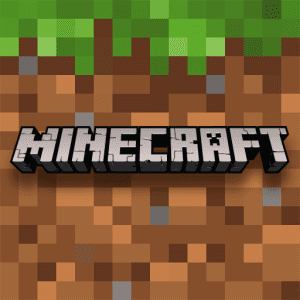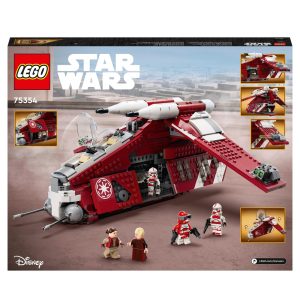Mastering the Basics: A Beginner’s Guide to Minecraft


Mastering the Basics: A Beginner’s Guide to Minecraft


Introduction
Minecraft is a wildly popular sandbox game that allows players to explore, create, and survive in a vast blocky world. With its endless possibilities and open-ended gameplay, Minecraft has captured the hearts of millions of players worldwide. However, for beginners, the game can be overwhelming due to its sheer size and complexity. In this comprehensive guide, we will take you through the basics of Minecraft, step by step, to help you embark on your adventure with confidence.
Table of Contents
- Getting Started with Minecraft 1.1. Creating an Account and Installing Minecraft 1.2. Understanding the Game Modes 1.3. Exploring the Main Menu
- The Basics of Minecraft Controls 2.1. Keyboard Controls 2.2. Mouse Controls 2.3. Customizing Controls
- Your First Steps in Minecraft 3.1. Spawning into the World 3.2. Understanding the User Interface 3.3. Exploring Your Surroundings
- Gathering Resources and Crafting 4.1. Breaking Blocks and Collecting Resources 4.2. Crafting Basics 4.3. Crafting Tools and Weapons
- Building Your Shelter 5.1. Selecting a Location 5.2. Constructing a Basic Shelter 5.3. Expanding Your Shelter
- Exploring and Mining 6.1. Understanding Biomes 6.2. Mining for Valuable Resources 6.3. Dangers and Precautions
- Interacting with the Environment 7.1. Farming and Agriculture 7.2. Breeding Animals 7.3. Fishing and Enchanting
- Facing the Challenges 8.1. Dealing with Hostile Mobs 8.2. Navigating Dungeons and Strongholds 8.3. Preparing for the Ender Dragon
1. Getting Started with Minecraft
1.1. Creating an Account and Installing Minecraft
To begin your Minecraft journey, you first need to create an account on the official Minecraft website (minecraft.net). Once you have registered, you can purchase and download the game. Minecraft is available on multiple platforms, including PC, Mac, consoles, and mobile devices. Install the game following the instructions provided by the Minecraft website.
1.2. Understanding the Game Modes
Minecraft offers several game modes, each with its own unique gameplay experience. The main game modes are:
- Survival: In this mode, players must gather resources, build shelter, and survive against various challenges, including hostile mobs.
- Creative: This mode provides unlimited resources and allows players to focus solely on building and creating.
- Adventure: In this mode, players can experience custom maps and adventures created by the Minecraft community.
- Spectator: Spectator mode allows players to explore the Minecraft world freely without interacting with it.
For beginners, it is recommended to start with the Survival mode, as it offers a balanced experience of exploration, building, and survival.
1.3. Exploring the Main Menu
Upon launching Minecraft, you will be greeted with the main menu. Here, you can access various options and settings:
- Singleplayer: Allows you to play the game alone.
- Multiplayer: Enables you to connect and play with other players on servers.
- Options: Adjust game settings, including graphics, controls, and audio.
- Skins: Customize your character’s appearance with different skins.
- Achievements: Track your progress and unlock achievements.
- Help & Options: Access game guides, tutorials, and support.
Take some time to familiarize yourself with the main menu and its options before diving into the game.
2. The Basics of Minecraft Controls
2.1. Keyboard Controls
Understanding the keyboard controls is essential for navigating and interacting with the Minecraft world. Here are the basic keyboard controls:
- W, A, S, D: Move forward, left, backward, and right.
- Spacebar: Jump.
- Shift: Sneak or crouch.
- Left-click: Break blocks or attack.
- Right-click: Place blocks or use items.
- E: Open the inventory.
- Esc: Pause the game and access the game menu.
These are the primary controls you will use most frequently in Minecraft. You can customize the controls to suit your preferences by going to the Options menu.
2.2. Mouse Controls
The mouse controls in Minecraft are crucial for looking around and interacting with the world. Here are the basic mouse controls:
- Move the mouse: Look around and change your view.
- Left-click: Break blocks or attack.
- Right-click: Place blocks or use items.
2.3. Customizing Controls
If you find the default controls uncomfortable, you can customize them to your liking. Simply go to the Options menu, select Controls, and modify the keybindings according to your preferences.
3. Your First Steps in Minecraft
3.1. Spawning into the World
Upon starting a new game in Survival mode, you will spawn into a random location in the Minecraft world. Take a moment to observe your surroundings and get a sense of your surroundings.
3.2. Understanding the User Interface
The user interface (UI) in Minecraft provides important information and tools. Here are the key elements of the UI:
- Hotbar: Located at the bottom of the screen, the hotbar displays the items and tools you have in your inventory. Press the corresponding number key (1-9) to select an item from the hotbar quickly.
- Health and Hunger: The heart icon represents your health, while the drumstick icon represents your hunger level. Keep an eye on these indicators and ensure they are adequately maintained.
- Experience Bar: The green bar at the bottom of the screen represents your experience points. You can gain experience by various activities like mining, crafting, and defeating mobs.
- Crosshair: The center of the screen displays a crosshair, which indicates the block or entity you are currently looking at.
- Inventory: Press the E key to access your inventory. Here, you can store and organize items you have collected.
Take some time to familiarize yourself with the UI and understand how the different elements work together.
3.3. Exploring Your Surroundings
Once you’ve spawned into the world, it’s time to start exploring. Look around and take note of the landscape, biomes, and any nearby structures. Use the W, A, S, D keys to move and the mouse to change your view.
As you explore, you will come across various types of blocks and resources. Experiment with breaking different blocks to collect resources such as wood, stone, and dirt. These resources will be crucial for crafting and building later on.
Remember to keep an eye out for potential dangers, such as hostile mobs or treacherous terrain. It’s best to avoid confrontations until you have equipped yourself adequately.
4. Gathering Resources and Crafting
4.1. Breaking Blocks and Collecting Resources
In Minecraft, breaking blocks is the primary way to gather resources. Different blocks yield different materials when broken. Here are some common resources and the blocks they can be obtained from:
- Wood: Obtainable from trees by breakingthe wooden blocks in their trunks.
- Stone: Obtained by breaking stone blocks found underground or on the surface.
- Dirt: Obtained by breaking dirt blocks on the ground.
- Coal: Found in coal ore blocks, which can be mined with a pickaxe.
To break a block, position yourself in front of it and left-click with your mouse. The block will break, and the resource will drop, which you can collect by walking over it. Use the W, A, S, D keys to move and position yourself correctly.
4.2. Crafting Basics
Crafting is a fundamental aspect of Minecraft that allows you to create tools, weapons, and other items. To craft, you will need to access the crafting table. Here’s how to craft a basic crafting table:
- Collect four wooden planks by placing wood in the crafting grid. Wood can be obtained by breaking tree trunks.
- Open your inventory (press E) and place the wooden planks in the crafting grid, filling all four slots of the 2×2 crafting grid.
- Once the crafting recipe is complete, you will receive a crafting table. Drag it into your inventory to collect it.
To use the crafting table, place it on the ground and right-click on it. This will open a larger crafting grid, allowing you to create more advanced items.
4.3. Crafting Tools and Weapons
With your crafting table, you can now create essential tools and weapons. Here are a few examples:
- Wooden Pickaxe: Crafted by placing three wooden planks in the top row and two sticks in the middle and bottom rows of the crafting grid.
- Wooden Sword: Crafted by placing two wooden planks in the middle column and one stick in the bottom row of the crafting grid.
To craft these items, open the crafting table, place the required materials in the appropriate pattern, and collect the resulting item. Experiment with different crafting recipes to discover new items and tools.
5. Building Your Shelter
5.1. Selecting a Location
Building a shelter is crucial for surviving the dangers of Minecraft. When selecting a location for your shelter, consider the following factors:
- Proximity to Resources: Choose a location near essential resources like trees, stone, and water.
- Terrain: Look for flat or easily modifiable terrain for easier construction.
- Safety: Avoid building in areas populated by hostile mobs or near hazardous structures.
- Accessibility: Ensure that your shelter is easily accessible and not too far from your spawn point.
5.2. Constructing a Basic Shelter
To construct a basic shelter, follow these steps:
- Clear the area: Remove any unwanted blocks or vegetation to create space for your shelter.
- Foundation: Lay the foundation by placing blocks in a rectangular shape or as per your desired design.
- Walls: Build walls around the foundation using the blocks of your choice. Leave an opening for a doorway.
- Roof: Construct a roof by placing blocks across the top of the walls, ensuring it is fully covered.
- Door: Craft a wooden door using wooden planks and place it in the doorway of your shelter.
- Furnishings: Optionally, add a crafting table, bed, and other essential items to make your shelter functional.
Remember, a basic shelter is just the beginning. As you progress, you can expand and improve your shelter to suit your needs and creativity.
5.3. Expanding Your Shelter
As you gather more resources and become more comfortable in the game, you can expand your shelter to include additional rooms and features. Consider the following ideas for expansion:
- Storage Room: Create a dedicated space for storing your items and resources.
- Workstation Area: Set up areas for crafting, smelting, and enchanting.
- Farming Area: Establish an indoor or outdoor space for growing crops and breeding animals.
- Decorations: Add furniture, paintings, and other decorative elements to personalize your shelter.
The possibilities for expanding your shelter are limitless, so let your imagination run wild and create a space that reflects your style and needs.
6. Exploring and Mining
6.1. Understanding Biomes
Minecraft features various biomes, each with its unique characteristics, resources, and aesthetics. Some common biomes include forests, deserts, mountains, and oceans. Exploring different biomes is essential for discovering rare resources and encountering different types of terrain.
6.2. Mining for Valuable Resources
Mining is a crucial activity in Minecraft that allows you to obtain valuable resources like coal, iron, diamonds, and more. Follow these steps to start mining:
- Equip yourself with a pickaxe: Craft a pickaxe using sticks and either wooden planks or other materials like stone, iron, or diamond.
- Locate a cave or dig underground: Look for natural cave openings or dig your own staircase down to find underground caverns.
- Illuminate the area: Place torches or other light sources to ensure visibility and prevent hostile mob spawns.
- Mine strategically: Focus on breaking blocks such as stone, coal ore, iron ore, and diamond ore. Collect the resources that drop.
Mining can be a time-consuming process, but the rewards are worth it. The deeper you go, the more valuable resources you are likely to find.
6.3. Dangers and Precautions
While mining, be aware of potential dangers and take precautions to ensure your safety:
- Watch out for lava: Lava can be found underground and can cause significant damage or destroy your items. Approach it with caution or block it off with non-flammable blocks.
- Protect yourself from falling: Be careful when mining at higher elevations to avoid falling into deep pits or lava.
- Stay prepared: Carry essential tools, weapons, and torches. Additionally, keep food and healing items in your inventory to replenish health and hunger.
By staying cautious and prepared, you can mitigate risks and make your mining expeditions safer and more rewarding.
7. Interacting with the Environment
7.1. Farming and Agriculture
Farming is an essential aspect of Minecraft that allows you to grow crops for food and resources. Here are the basic steps to start a farm:
- Prepare the land: Clear an area of grass or dirt and till the soil using a hoe.
- Plant seeds: Obtain seeds by breaking tall grass or finding them in dungeons. Right-click on tilled soil to plant the seeds.
- Water the crops: Ensure that your crops are within range of a water source or use a water bucket to hydrate the soil.
- Wait for growth: Crops will take time to grow, so be patient. You can speed up the process by using bonemeal on them.
- Harvest and replant: Once the crops are fully grown, break them to collect the produce. Leave a few crops for seeds to replant and sustain your farm.
Common crops include wheat, carrots, potatoes, and beetroot. Experiment with different crops to diversify your food options.
7.2. Breeding Animals
Breeding animals in Minecraft can provide a sustainable source of food, resources, and companionship. Follow these steps to breed animals:
- Obtain two of the same animal: Locate and capture two animals of the same species, such as cows, sheep, or pigs.
- Provide sufficient space: Create a suitable pen or enclosure to keep the animals together.
- Feed them: Hold the suitable food item (e.g., wheatfor cows, carrots for pigs) and right-click on each animal to feed them.
- Wait for love mode: Hearts will appear above the animals, indicating they are in “love mode.”
- Breeding: After the love mode, the animals will breed and produce offspring.
Breeding animals not only expands your livestock but also allows you to collect resources like meat, wool, and leather.
7.3. Fishing and Enchanting
Fishing is an enjoyable activity in Minecraft that allows you to catch fish, treasure, and other valuable items. Here’s how to fish:
- Craft a fishing rod: Use sticks and string to craft a fishing rod.
- Find a water source: Locate a body of water, such as a lake or an ocean.
- Cast your fishing line: Right-click while holding the fishing rod to cast your line into the water.
- Wait for a bite: Watch for the bobber to dip underwater, indicating that a fish has bitten.
- Reel in your catch: Right-click again to reel in the fish.
Fishing can yield not only fish but also enchanted books, enchanted fishing rods, and other valuable items.
Enchanting is another aspect of Minecraft that allows you to add special enchantments to your tools, weapons, and armor. To enchant items, you will need an enchantment table and experience points. By combining certain items with enchanted books or using an enchantment table, you can enhance the capabilities of your gear.
8. Facing the Challenges
8.1. Dealing with Hostile Mobs
Minecraft is home to various hostile mobs that can pose a threat to your survival. Here are a few common hostile mobs and tips for dealing with them:
- Zombies: Avoid their attacks and attack them with a sword or other weapon.
- Skeletons: Keep your distance and use ranged attacks or melee attacks while circling them.
- Creepers: Be cautious, as they can explode when near. Attack from a distance or use a shield to block their explosion.
- Spiders: Engage them in open areas and use a sword to defeat them.
It’s important to equip yourself with weapons, armor, and healing items to withstand attacks from hostile mobs.
8.2. Navigating Dungeons and Strongholds
Dungeons and strongholds are structures in Minecraft that often contain valuable loot and challenges. When exploring these structures, consider the following:
- Lighting: Place torches to illuminate the area and prevent mob spawns.
- Traps: Be cautious of traps, such as pressure plates that trigger arrow dispensers or tripwires connected to explosions.
- Loot: Search chests and rooms for valuable items like enchanted books, ores, and other rare resources.
Exploring dungeons and strongholds can be risky, so be prepared with weapons, armor, and healing items.
8.3. Preparing for the Ender Dragon
The Ender Dragon is the final boss in Minecraft and resides in the End dimension. Defeating the Ender Dragon requires careful preparation and strategy. Here are some essential steps:
- Acquire Ender Pearls: Obtain Ender Pearls by defeating Endermen, which can be found in the Overworld at night.
- Locate a Stronghold: Use Ender Pearls or trade with villagers to acquire Eyes of Ender. Throw an Eye of Ender to locate the Stronghold where the End Portal is located.
- Activate the End Portal: Place Eyes of Ender in each End Portal frame block to activate the portal.
- Enter the End dimension: Step into the End Portal to be transported to the End dimension.
- Battle the Ender Dragon: Engage the Ender Dragon using ranged and melee attacks while avoiding its attacks. Destroy the Ender Crystals on top of obsidian pillars to weaken the dragon. Continue attacking until the dragon is defeated.
Defeating the Ender Dragon requires advanced gear, including enchanted weapons, armor, and healing potions. It’s also recommended to bring Ender Pearls, a bow, and plenty of arrows.
Conclusion
Congratulations! You have now mastered the basics of Minecraft and are ready to embark on your own adventures. From surviving the night to building magnificent structures, the possibilities in Minecraft are limitless. Remember to continue exploring, gathering resources, and expanding your skills and knowledge of the game.
Minecraft is a game that rewards creativity, resourcefulness, and resilience. With practice and experience, you will become a seasoned player capable of conquering the most challenging aspects of the game. So, grab your pickaxe, don your armor, and venture forth into the pixelated world of Minecraft. Good luck and have fun!








